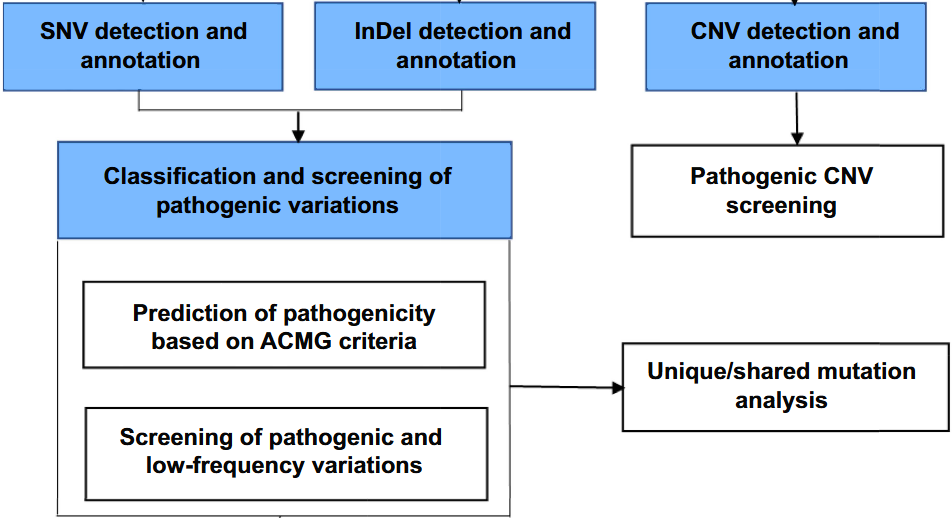Potential susceptibility genes in patients with stage III and IV periodontitis: A whole-exome sequencing pilot study
DOI:
https://doi.org/10.17305/bb.2023.9282Keywords:
Periodontitis, whole-exome sequencing (WES), genetic susceptibility, single nucleotide polymorphism (SNP), insertion/deletion (InDel), single nucleotide variant (SNV)Abstract
The aim of this study was to screen potential susceptibility genes using whole-exome sequencing (WES) in 15 Han Chinese patients with stage III or IV periodontitis and to evaluate the quantity and quality of genomic DNA extracted from saliva. DNA was extracted from saliva epithelial cells, quality-tested, and then subjected to WES and bioinformatics analyses. All variation loci were analyzed and interpreted following the American College of Medical Genetics and Genomics (ACMG) criteria. Candidate pathogenic variation loci were identified and verified using Sanger sequencing. Correlation and functional analyses of the candidate genes were used to identify potential susceptibility genes in patients with severe periodontitis. LFNG, LENG8, NPHS1, HFE, ILDR1, and DMXL2 genes were identified in over two cases each with shared mutations. Following these analyses, the DMXL2 gene was identified as being associated with stage III and IV periodontitis. These results suggest a potential pathophysiological risk mechanism for periodontitis, but need to be verified through larger clinical studies and mechanistic experiments to determine the pathogenicity of these gene mutations and their generalizability to a wider population of periodontitis patients. By screening candidate pathogenic variation loci using WES in 15 Han Chinese patients with stage III or IV periodontitis, our study could provide a pipeline and feasibility support for the identification of susceptibility genes in patients with stage III and IV periodontitis.
Citations
Downloads

Downloads
Additional Files
Published
Issue
Section
Categories
License
Copyright (c) 2023 Fan Xue, Jianjiang Zhao, XiaoCui Gao, Xuehai Jiang, Zedong Lan

This work is licensed under a Creative Commons Attribution 4.0 International License.
How to Cite
Accepted 2023-07-07
Published 2024-01-03









